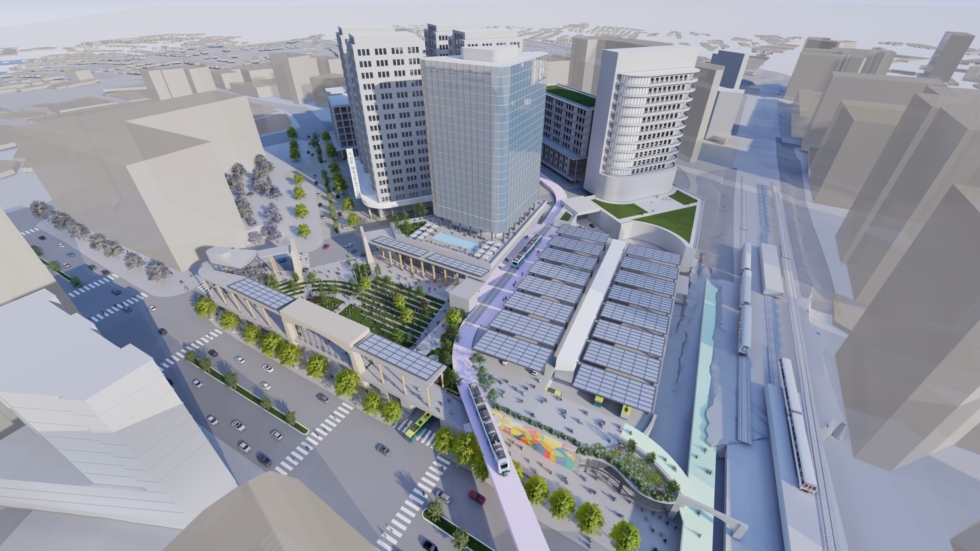An array of leaders from the Washington, DC, city planning department, local building industry, and Business Improvement Districts (BIDs) arrived at Perkins Eastman’s offices last August to watch a presentation designed to advance Mayor Muriel Bowser’s call to attract at least 15,000 more residents to the downtown core. Under Managing Principal and Executive Director Barbara Mullenex AIA, the firm had already been instrumental in convening people and ideas to figure out how to make the city center as appealing to residents as it is for university students, business, and tourism. But the office’s summer interns played a powerful role in this August presentation, and their ideas are still in play as the Downtown Action Plan nears completion this quarter. “The work that we’re showing is the work that they presented, and the work they participated in. A lot of this was their ideas and their energy,” Mullenex says. “If we could make our summer intern program about what we get from them instead of what we’re doing for them, that’s the secret sauce.”

The DC Office of the Deputy Mayor for Planning & Economic Development (DMPED) issued this map of
downtown, highlighting zones most targeted for improvement in the post-pandemic era. Source: DMPED
The August presentation was the culmination of what’s come to be known as The Big Project. It represents a cultural shift in the way Perkins Eastman’s DC office organizes its intern program each summer. It originated in the summer of 2022, when Maryland’s Montgomery County invited the firm to present a concept vision for reimagining a transit center and public space in Silver Spring. “I thought it was perfect for the interns,” Principal Matthew Bell FAIA says. He divided them into teams, along with staff members at every rank up to and including principals. This vertical organization, Bell explains, “worked like a charm” to generate fresh perspectives through experienced guidance. The result was “Gateway Gardens,” a concept that provides a heart to this vibrant area with a well-defined public realm to make it a pleasing experience for pedestrians, where today it’s a knot of roads and transit stops. Montgomery County has posted the design on its website along for further consideration. “The goal was to get out there and open opportunities to be invited when the county is ready to develop the site,” says Senior Associate Ahmed Zaman AIA, who participated in the effort.








